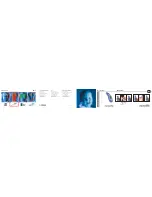
20
User's Guide ADI-8 DD © RME
9. Word Clock
9.1 Operation and Technical Background
In the analogue domain one can connect any device to another device, a synchronization is not
necessary. Digital audio is different. Correct interpretation of digital audio data is dependent
upon a definite sample frequency. Signals can only be correctly processed or transferred be-
tween devices if these all share the same clock. Otherwise digital signals are misinterpreted,
causing distortion, clicks/crackle and even dropouts.
AES/EBU, SPDIF and ADAT optical are self-clocking (seen from a non-technical view TDIF
too, as word clock is embedded inside the TDIF cable), so an additional line for word clock
could be considered redundant. In practice however, using several devices at the same time
can cause problems. For example, if devices are connected in a loop without there being a
defined ‘master’ device, self-clocking may break down. Besides, the clocks of all devices must
be synchronized from a single source. Devices without SPDIF inputs (typically playback de-
vices such as CD- players) cannot be synchronized via self-clocking. Finally there are 'prob-
lematic' devices, which are nearly un-usable without a word clock attached anyway.
In digital studios, synchronization requirements can be met by connecting all devices to a cen-
tral sync source. For instance, the master device could be a mixing desk, sending a reference
signal - word clock - to all other devices. However, this will only work if all the other devices
have word clock or sync inputs (e.g. some professional CD-players), allowing them to run as
slaves. This being the case, all devices will receive the same clock signal, so there is no fun-
damental reason for sync problems when they are connected together.
But word clock is not only the 'great problem solver', it also has some disadvantages. The word
clock is based on a fraction of the really needed clock. For example SPDIF: 44.1 kHz word
clock (a simple square wave signal) has to be multiplied by 128 or 256. This signal then re-
places the one from the internal quartz crystal. Because of the high multiplication factor the
reconstructed clock will have great deviations called jitter. The jitter caused by word clock is
typically 15 times higher as when using a quartz based clock*.
The end of these problems should have been the so called Superclock, which uses 256 times
the word clock frequency. The PLL for multiplying is no longer needed, and the clock can be
used directly. But in practise Superclock proved to be much more critical than word clock. A
square wave signal of 11 MHz distributed to several devices - this simply means to fight with
high frequency technology. Reflections, cable quality, capacitive loads - at 44.1 kHz these fac-
tors may be ignored, at 11 MHz they are the end of the clock network. After all, Superclock
never became popular - and we didn't make up our minds to add this not standardized tech-
nique to the ADI-8 DD.
The usage of word clock with ADAT optical is critical too. The ADI-8 DD always uses a Bitclock
PLL, no matter if the clock reference is word clock or ADAT. Thanks to its very fine resolution
this exceptional circuit is able to follow the complete vari-speed range of the ADAT recorder
without losing a sample. Many other devices use a much coarser word clock PLL to track the
ADAT input. When changing the sample rate (speed) fast, some bits are already sampled in-
validly before the frequency is corrected. Drop outs and crackling will be the audible result. So
as long as you are working with the ADI-8 DD - no problem. Working with devices of other
manufacturers you may experience drop outs when the sample rate changes only slightly.
* As long as it does not cause functional problems, jitter is only affecting AD- and DA-conversion. For completely digital
devices like the ADI-8 DD jitter is virtually meaningless, because the data remains unaltered even with high jitter.
Содержание ADI-8 DD
Страница 30: ...30 User s Guide ADI 8 DD RME 14 Block Diagram...













































